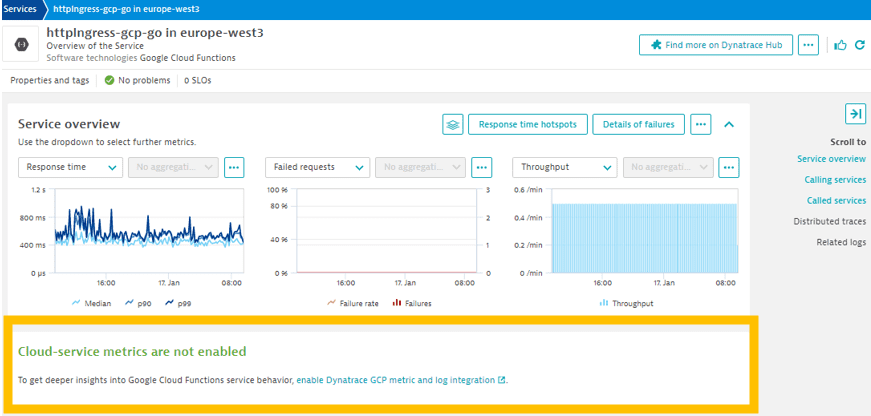Serverless monitoring
- Latest Dynatrace
- 3-min read
- Published Jan 27, 2023
The term serverless defines the cloud services that share common characteristics:
- Heavily abstracted and not requiring the management of underlying infrastructure
- Highly available and scaling elastically with your needs
- Billed on a pay-per-use (consumption) model
While often used as a synonym for Functions-As-A-Service (FaaS), serverless cloud services span all sorts of services. The three most important categories are:
- Serverless compute, including functions and containers, as well as managed Kubernetes
- Serverless PaaS such as API gateways, messaging systems, or queues
- Serverless databases and caches
Observability challenges
The nature of serverless technologies creates some challenges for the effective observability of such cloud services:
- Heavily distributed, which makes distributed tracing a critical capability.
- Sandboxed environments, with limited capabilities to modify.
- Many different ways to capture telemetry.
- Limitations of cloud provider native monitoring services
- Gaining an understanding of system behavior can be difficult, as telemetry is provided from many data sources and spread across multiple places.
- Obtaining an end-to-end view can be difficult, especially when using hybrid or multi-cloud and third-party applications.
- Limited capabilities, missing critical capabilities such as real user monitoring, or profiling requiring additional tools.
- New problem patterns:
- Cold start behavior
- Cloud service provisioning optimizations
- Complex service limits and quotas
- Transient faults
Serverless observability with Dynatrace
By providing deep integrations with the three major public cloud provider services to capture metrics, metadata, events, logs, and traces, Dynatrace unifies all the data sources and brings them into context to provide end-to-end visibility and Davis AI-powered analysis of this data.

With over 600+ integrations, extensions, and technology-specific support, Dynatrace provides extensive monitoring support, including your serverless technologies running on AWS, Azure, or Google Cloud.
Getting started with serverless monitoring
 Turn on cloud service monitoring
Turn on cloud service monitoring
With a single integration per cloud vendor, Dynatrace automatically discovers your cloud services and monitors the services to provide you with out-of-the-box service health and availability monitoring:
 Enable Dynatrace extensions on cloud services that provide a native extensibility mechanism
Enable Dynatrace extensions on cloud services that provide a native extensibility mechanism
Several cloud compute services allow a simple integration without the need to redeploy your service. This makes it easy to add deep service instrumentation for additional visibility.
Visit Dynatrace Hub to see all services with a cloud-native integration.
 Advanced visibility
Advanced visibility
For instructions on how to integrate Dynatrace into your container image, or how to make use of OpenTelemetry or advanced visibility to enable additional details via logs and other telemetry events, see the service-specific tutorials in our documentation:
Be sure to watch for the recommendations within the Dynatrace web UI to enable additional telemetry sources that will improve the observability of your services. For example:
